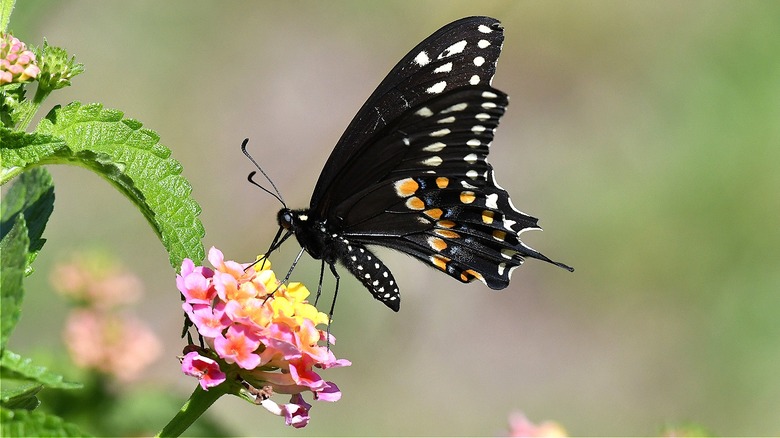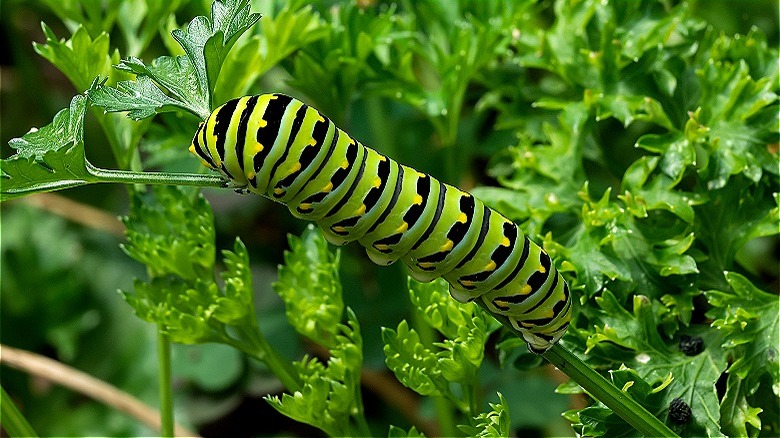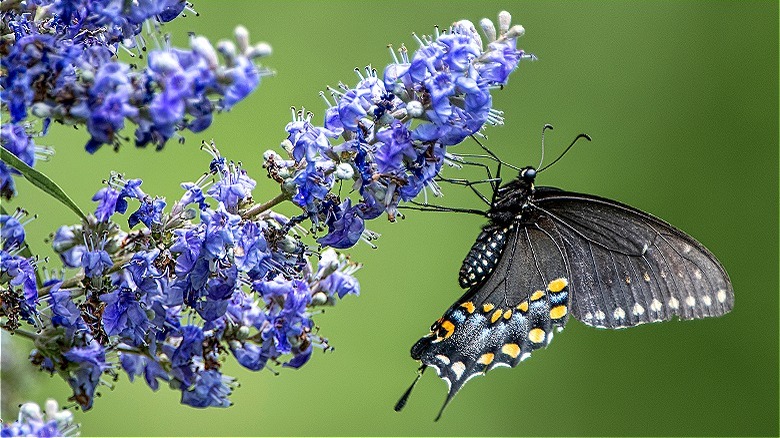The Easy-To-Grow Herb That'll Attract More Butterflies To Your Garden
Parsley plants have a number of good functions in the kitchen, including flavoring soups and casseroles, and it's a great herb to grow yourself so you always have some on hand. However, did you know growing and caring for your own parsley also brings the additional benefit of attracting more butterflies to your garden? Even better, the herb is rather easy to cultivate and grow, meaning you can plant more than enough to share between your kitchen and all the new munching caterpillars that'll find their way to your garden patch.
As for those caterpillars, we're talking specifically about parsley caterpillars or parsley worms. These distinctive bright green, yellow, and black caterpillars are often mistaken for actual worms or pests, especially when they're found covering parsley and other related plants, which seem to be their tasty favorite. In truth, these creatures are the caterpillar stage of the gorgeous black swallowtail butterfly, a welcome garden visitor with striking black wings and blue, yellow, and orange markings.
A welcome garden guest
Parsley (Petroselinum crispum) is an easy-to-grow biennial plant, which means the herb shows its best and most lush growth every other year. This sometimes means farmers and gardeners start fresh each year and plant parsley as an annual to have a steady crop year after year. Available in both curled and flat-leaf varieties, this herb also serves as a great companion plant to peppers, tomatoes, and asparagus, and carries a reputation for magnifying and sweetening the scent of neighboring roses — another plant butterflies just so happen to like.
As for the parsley caterpillar — or early-stage black swallowtail butterfly — its well-known attraction to parsley makes the herb a great addition when creating a butterfly garden. While some gardeners may object to the caterpillars eating the leaves of their parsley plants, a better approach to getting rid of them is to simply plant more parsley, which grows in abundance rather easily. If you must remove the caterpillars from the herb, though, be sure to relocate them to neighboring bushes and shrubs, where they'll eventually undergo metamorphoses, transforming into the more welcome swallowtails.
Growing parsley for more butterflies
By welcoming the parsley caterpillar to your garden, you'll increase the likelihood that black swallowtail butterflies will find your garden a safe haven and spot for breeding, continuing the life cycle of egg, caterpillar, pupa, and adult. To attract these butterflies and provide them with a healthy habitat, simply grow extra parsley for the summer and autumn months. Sow parsley seeds in March, April, and May for a harvest from July through October.
Relatively easy to grow, place your parsley plants in the ground or a container in a well-lit spot in the garden, ideally with around six to eight hours of direct sunlight. If direct sun isn't possible, indirect light for the entire day can also produce good results. Parsley does best in acidic soils and climates with temperate temperatures (50 to 70 degrees Fahrenheit).
Note that the herb is subject to pests and infestations like aphids, leaf miners, cabbage loppers, and click beetles, as well as a number of fungi. If you live where winters are harsher, parsley is also a great herb to grow inside during parts of the year. As for watering, while seedlings need more frequent watering at first, adult parsley plants only need watering every few days.


